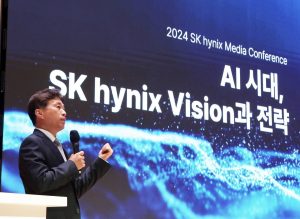Popular Keywords
- About Us
-
Research Report
Research Directory
Semiconductors
LED
Consumer Electronics
Emerging Technologies
- Selected Topics
- Membership
- Price Trends
- Press Center
- News
- Events
- Contact Us
News

SK hynix announced today that it recorded best-ever yearly performance with 66.1930 trillion won in revenues, 23.5 trillion won in operating profit with an operating margin of 35%, and 19.8 trillion won in net profit with a net margin of 30%. SK hynix’s yearly revenues marked all-time high, exc...
Insights

According to TrendForce's latest memory spot price trend report, regarding DRAM, the spot market has shown a marginal demand increase this week, but transaction prices remain relatively low as buyers are testing the water with low-price inquiries. As for NAND flash, announcements on production cuts ...
News

Amid market concerns that major memory firms have been gradually scaling down their legacy NAND production, the reports from Business Korea and Sedaily, citing Korea Customs Service data, validate the worries. In the fourth quarter of 2024, South Korea's NAND flash exports dropped 13.1% year-over-ye...
Insights

According to TrendForce's latest memory spot price trend report, regarding DRAM, demand has slightly improved in the spot market. Some buyers have started to seek quotes in response to their incoming orders, though transaction prices are still relatively low. As for NAND flash, demand has started to...
News

According to Chosun Biz, Samsung Electronics has reportedly decided to cut NAND flash production at its Xi’an plant in China, its largest manufacturing base for the memory chips. The move appears to be a strategic effort to protect profitability as a global NAND oversupply persists, leading to a p...